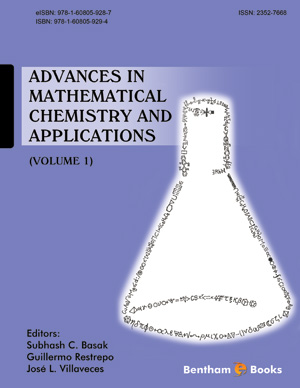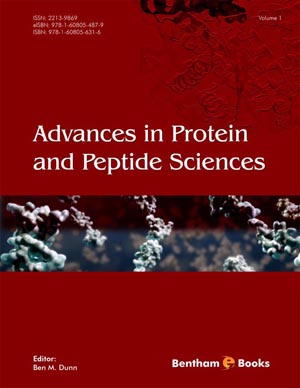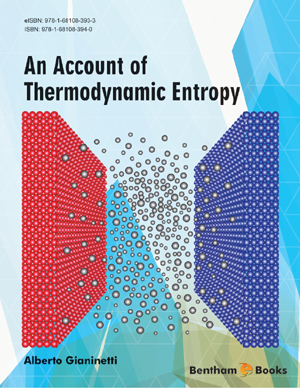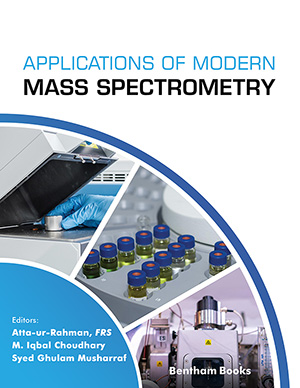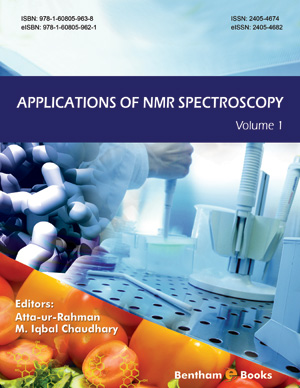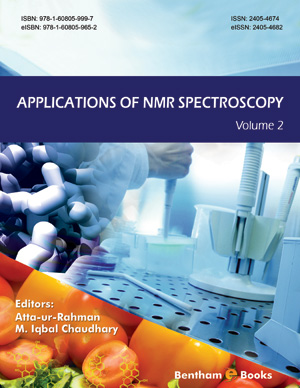Book Volume 2
Contributors
Page: i-iii (3)
Author: Atta-ur-Rahman and Kenneth K. Laali
DOI: 10.2174/97816080519841060201000i
Abstract
Full text available
Electrophilic Fluorination with Elemental Fluorine and Reagents Derived from it
Page: 3-41 (39)
Author: Shlomo Rozen
DOI: 10.2174/978160805198410602010003
PDF Price: $15
Abstract
Elemental fluorine is a highly reactive reagent which could destroy almost any organic compound or perfluorinate it under controlled conditions. However, under the right set of conditions, it may act as an electrophile and as such, it can be a powerful electrophile indeed. This chapter describes some regio- and stereospecific electrophilic fluorination at saturated tertiary sp3 centers, which are usually very unreactive and cannot participate in specific organic reactions. It was concluded that the higher the hybridization on p of these centers, the better is the outcome of the reaction. In many cases, the substitution of such tertiary hydrogen takes place in yields of 70% and more. Such fluorinations, which were carried out on a wide variety of organic compounds, provide an excellent opportunity for dehydrofluorination reactions to form double bonds and hence are considered to enable functionalization of “impossible sites” in organic molecules. Elemental fluorine was also used for fluorination of double bonds, in a syn mode, replacing the old and inefficient method of reacting olefins with Pb(OAc)4 and HF. Acetyl hypofluorite is easily and readily made from sodium acetate and F2. It proved to be a very useful reagent for fluorination of activated aromatic compounds, for addition across double bonds, in order to synthesize biologically important fluorine containing derivatives, for constructing α- fluoro carbonyl and ether derivatives and for use in Positron Emitting Tomography (PET).
The Chemistry of Interhalogen Monofluorides
Page: 43-48 (6)
Author: Dale F. Shellhamer and Victor L. Heasley
DOI: 10.2174/978160805198410602010043
PDF Price: $15
Abstract
Interhalogen monofluorides (XF; X=Cl, Br or I) generated in situ from hypohalites or N-halosuccinimides and a source of fluoride ion are “sluggish” electrophiles. XF reagents formed from F2 gas and a halogen source (ie: ClF3, Br2, I2,) are very reactive electrophiles. This wide range of reactivity allows the synthetic chemist to carry out reactions on electron-rich or electron-deficient substrates. Halofluorinations of alkenes, alkynes and electrophilic aromatic substitution without catalyst are reviewed. Synthesis of geminal difluorides from hydrazones is also presented.
Fluorination Using Hypervalent Halogen Fluorides
Page: 49-60 (12)
Author: Shoji Hara
DOI: 10.2174/978160805198410602010049
PDF Price: $15
Abstract
Among various hypervalent halogen fluorides, BrF3, IF5, and ArIF2 have been successfully used to introduce fluorine atoms into molecules selectively. Characteristic features and representative fluorination reactions involving these reagents are shown.
Application of Xenon Difluoride in Synthesis
Page: 61-157 (97)
Author: Barbara Zajc
DOI: 10.2174/978160805198410602010061
PDF Price: $15
Abstract
Reactions of xenon difluoride (XeF2) with alkanes, carbanions, alkenes and alkynes, aromatic and heteroaromatic compounds, carbonyl derivatives, benzyl alcohols, organic iodo compounds, organosulfur, selenium, tellurium, phosphorus, antimony, bismuth, silicon and tin compounds are reviewed. Greater emphasis has been placed on the synthetic details and utility. For each functional group, the most recent papers describing the reactivity of XeF2 are discussed in more detail. Research progress achieved during the period 1999-2004 is reviewed rather comprehensively. Also included are the syntheses of compounds containing C-Xe(II) bond employing xenon difluoride and its derivatives.
N-Fluoropyridinium Salts, Synthesis and Fluorination Chemistry
Page: 159-181 (23)
Author: Teruo Umemoto
DOI: 10.2174/978160805198410602010159
PDF Price: $15
Abstract
Synthesis of N-fluoropyridinium salts and their synthetic application are discussed. Various types of stable N-fluoropyridinium salts are synthesized from unsubstituted and substituted pyridines and acids, their salts, silyl esters or Lewis acids by reaction with F2 diluted with N2. The N -fluoropyridinium salts are particularly useful as electrophilic fluorinating agents toward organic compounds in terms of easy handling and variability of fluorinating power and selectivity. This variability makes selective fluorination of a wide range of organic compounds differing in reactivity possible. Three classes of power- and selectivity-variable fluorinating agents, non-counterion-bound N-fluoropyridinium salt series, counterion-bound N-fluoropyridinium-sulfonate series, and dimeric N,N’- difluorobipyridinium salt series, were developed and successfully utilized for selective fluorinations of various substrates. As another synthetic application, a novel base-initiated reaction of N-fluoropyridinium salts producing α- fluoropyridines is discussed.
Onium-Poly Hydrogen Fluorides as Acid Catalysts, Ionic Liquids and Fluorinating Agents in Organic Reactions
Page: 183-211 (29)
Author: V. Prakash Reddy, G. K. Surya Prakash and George A. Olah
DOI: 10.2174/978160805198410602010183
PDF Price: $15
Abstract
Onium-poly hydrogen fluorides, the amine or ether complexes of hydrogen fluoride, have been widely used as fluorinating agents in organic synthesis. A variety of fluorination reactions involving electrophilic additions to unsaturated compounds, nucleophilic substitutions, desulfurative fluorinations, strained ring-opening fluorinations, and deprotection of acetal, ketal and O-silyl ethers could be achieved with these onium-poly hydrogen fluorides. Fluorination of alcohols could be achieved under either SN1 or SN2 conditions, depending on the reagent choice and reaction conditions. Deaminative fluorinations using these reagents provide convenient access to chiral α-fluoro acids. As strong Bronsted acids they can be used to catalyze the electrophilic alkylation of alkanes with alkenes to give high-octane gasoline-range hydrocarbons. They also serve as high dielectric constant ionic liquid media. In addition, polymer-supported onium polyhydrogen fluorides such as polyvinylpyridinium polyhydrogen fluoride (PVPHF) have been developed as convenient alternative reagents, which could be recovered and recycled for further use.
N-Fluoro-1,4-Diazoniabicyclo[2.2.2]octane Dication Salts; Efficient Fluorinating Agents and Functionalization Mediators for Organic Compounds
Page: 213-268 (56)
Author: Stojan Stavber and Marko Zupan
DOI: 10.2174/978160805198410602010213
PDF Price: $15
Abstract
Fluorination of organic compounds using the most representative reagents from the group of N-fluoro-1,4-diazoniabicyclo[2.2.2]octane dication salts is reviewed. Data dealing with selective fluorofunctionalization of aromatics, alkenes, alkynes, saturated hydrocarbons, organometallics, and organic molecules bearing nitrogen, sulfur, phosphorus, silicon or carbonyl containing functional groups with SelectfluorTM F-TEDA-BF4 1 (1-chloromethyl- 4-fluoro-1,4-diazoniabicyclo[2.2.2]octane bis(tetra-fluoroborate)), Accufluor™ NFTh 2 (1-fluoro-4-hydroxy-1,4-diazoniabicyclo [2.2.2]octane bis(tetrafluoroborate)) or bis(NF)-TEDA-BF4 3 (1,4-difluoro-1,4-diazoniabicyclo[ 2.2.2]octane bis (tetrafluoroborate)) are systematically collected and comparatively evaluated. Fluorination of potentially bioactive organic molecules (steroids, pyrimidine bases, glycols …) with the above mentioned reagents is particularly emphasized. Functionalization of organic compounds mediated by Selectfluor™ F-TEDA-BF4 is briefly reviewed.
α,α-Fluoroalkyl(Alkenyl) Amino Reagents (FAR) - Recent Development
Page: 269-290 (22)
Author: Viacheslav A. Petrov
DOI: 10.2174/978160805198410602010269
PDF Price: $15
Abstract
The review provides an update on the synthesis α-Fluoroalkyl (alkenyl)Amino Reagents (FAR) and their application for conversion of hydroxyand carbonyl compounds into the corresponding fluorides.
The first part of the review contains data on the synthesis of FAR by addition of secondary amines to fluoroolefins, halogen exchange reactions, fluorination of carbonyl and thiocarbonyl compounds, as well as via electron transfer reactions of polyfluorinated bromoalkanes. The second section summarizes data on the physical properties, handling and storage of FAR. The third section of the review discusses the reactions of FAR with primary, secondary, tertiary, and cyclic alcohols, as well as sugars, carbonyl and thiocarbonyl compounds, and acids, which have been developed during the past decade. Recent results on the chemical transformations of FAR other than fluorination reactions are collected in the final section of the review.
DAST and Deoxofluor Mediated Nucleophilic Fluorination Reactions of Organic Compounds
Page: 291-326 (36)
Author: Rajendra P. Singha, Dayal T. Meshria and Jean’ne M. Shreeve
DOI: 10.2174/978160805198410602010291
PDF Price: $15
Abstract
Organofluorine compounds have had a marked impact on medicinal and agrochemical fields and the number of applications continues to grow. These significant contributions arise from the unique changes that occur in the physical and chemical properties of ordinary organic compounds wrought by the presence of fluorine or a fluorine-containing group. Among a large number of methods available to introduce fluorine into organic compounds, the nucleophilic replacement of oxygen with fluorine is one of the most practical ways. Although there are numerous fluorinating reagents available, diethylaminosulfur trifluoride (DAST) and bis(2-methoxyethyl)aminosulfur trifluoride (Deoxofluor) often are the reagents of choice. Organic compounds containing oxygen in hydroxyl and carbonyl groups are readily converted into their corresponding fluorinated analogues by the introduction of one or two fluorine atoms, respectively, through the use of these reagents. In some cases, depending upon the compound and the reaction conditions, a very useful nonfluorinated product can also be produced. Our interest in applying various synthetic methods to incorporate fluorine or a fluorinated group into a large variety of organic compounds encouraged us to summarize the recent chemistry of DAST and Deoxofluor.
Synthetic Approaches to gem-Difluoromethylene Compounds
Page: 327-351 (25)
Author: V. Prakash Reddy, Meher Perambuduru and Ramesh Alleti
DOI: 10.2174/978160805198410602010327
PDF Price: $15
Abstract
Organic compounds containing a gem-difluoromethylene group are useful for a variety of applications in biological, pharmaceutical and materials chemistry. Over the years a variety of synthetic protocols for this class of compounds have been developed. They can be prepared from their corresponding carbonyl compounds or through various derivatives such as oximes and dithiolanes, electrophilic fluorinations of unsaturated compounds and enolates, free-radical additions of halodifluoroalkanes to olefins, and nucleophilic difluoromethylations of aldehydes and ketones. Other approaches involve methods that utilize fluorinated compounds as synthons. Enantioselective gemdifluorination reactions have emerged employing chiral auxiliaries such as sulfinimines, and chiral Lewis acid catalysts. This review focuses on the recent developments in this area, emphasizing the synthetic methods that can be conveniently carried out and are potentially broadly applicable.
Fluorinated Polycyclic Aromatic Hydrocarbons (PAHs) and Heterocyclic Aromatic Hydrocarbons (Hetero-PAHs); Synthesis and Utility
Page: 353-380 (28)
Author: Takao Okazaki and Kenneth K. Laali
DOI: 10.2174/978160805198410602010353
PDF Price: $15
Abstract
Fluorinated aromatic compounds are in high demand in a number of fields including synthetic chemistry, molecular recognition/host-guest chemistry, materials chemistry, as well in biology and pharmaceuticals. Recent progress in the synthesis of fluorinated polycyclic hydrocarbons and heterocyclic hydrocarbons is reviewed.
Fluorinated Carbohydrates
Page: 381-429 (49)
Author: Martin Hein and Ralf Miethchen
DOI: 10.2174/978160805198410602010381
Abstract
The review demonstrates how carbohydrate chemists exploit the two fundamental strategies of organofluorine chemistry; (a) direct introduction of fluorine atom(s) or fluorinated groups by appropriate reagents in a late synthetic step, or (b) linking of fluorine-containing “building blocks“ with various reactants (including enantioselective approaches), in order to synthesize a wide variety of fluorinated sugars. Numerous representative examples of these strategies are provided and discussed. Also included are a number of recommended experimental procedures (provided at the end of sections 1-3). In addition to reviewing various convenient fluorinating reagents that have so far been applied to carbohydrate chemistry, the utility of glycosyl fluorides in chemical and enzymatic glycosylations are also examined.
Enantioselective Electrophilic Fluorination: The Complete Story
Page: 431-461 (31)
Author: C. Audouard, J. -A. Ma and D. Cahard
DOI: 10.2174/978160805198410602010431
Abstract
Progress in the field of enantioselective electrophilic fluorination during the past eighteen years resulting from fascinating research conducted by twelve international groups is reviewed. Two complementary strategies for the synthesis of enantiopure fluorine-containing molecules currently define state-of-the-art in this area. The use of chiral, non-racemic fluorinating agents is the most general approach while catalytic methods using either transition-metal catalysts or organocatalysts apply to specific substrates.
Synthesis of Chiral Fluorinated Materials via Biotransformation
Page: 463-490 (28)
Author: Tomoya Kitazume, Tomoko Matsuda and Kaoru Nakamuraa
DOI: 10.2174/978160805198410602010463
PDF Price: $15
Abstract
Biotransformation of organofluorine materials into the optically active functionalized fluorinated materials along with the discussion on the effect of fluorine atom(s) during the enantioselective and/or diastereoselective transformations is described. The ability of microorganism to discriminate between enantiomers is very important for the purpose of resolution and asymmetric synthesis. Also included are discussions on recent developments in methodologies to control enantioselectivities of catalytic reactions. Examples of practical applications that involve reduction of various types of ketones are also included.
Recent Advances in the Chemistry of Fluorine-Containing π-Allylmetal and Allenylmetal Complexes
Page: 491-522 (32)
Author: Tsutomu Konno and Takashi Ishihara
DOI: 10.2174/978160805198410602010491
PDF Price: $15
Abstract
π-Allylmetal complexes derived from α-fluoroalkylated allyl mesylates react smoothly with various nucleophiles such as stabilized carbanions, carboxylates, and amines at the carbon distal to a fluoroalkyl group in a highly regioselective manner to give the corresponding γ-products in high to excellent yields. Treatment of the above fluorine-containing π-allylmetal complexes with hydride nucleophile gives the adducts derived from the hydride attacking on the carbon attached to a fluoroalkyl group. The γ-adducts, obtained by the reaction of π-allylpalladium complex with α-methoxy acetate or N-protected glycine, undergo smooth Ireland-Claisen rearrangement to give the corresponding multifunctionalized molecules in high yields. On the other hand, the reaction of α- fluoroalkylated propargylic mesylates with zinc reagents or stabilized carbanions in the presence of palladium catalyst affords fluorine-containing allene or furan derivatives respectively, in high yields, via allenylpalladium complex.
Synthetic Utility of Fluorinated β-Keto-Phosphonium Salts, - Phosphonates and Related Compounds
Page: 523-572 (50)
Author: Yanchang Shen
DOI: 10.2174/978160805198410602010523
PDF Price: $15
Abstract
Sequential transformations have attracted much interest in recent years because they provide simple and efficient entry into complex compounds by including two or more steps in a single operation to increase the complexity of the substrate, starting from commercially available, relatively simple precursors. The new methodologies discussed in this review chapter are based on sequential transformations and possess high stereoselectivity. They include the synthetic utility of fluorinated β-keto-phosphonium salts, “one-pot” carbon-carbon double bond formation, ylide-ion formation resulting from nucleophilic addition, stereocontrolled olefination method, alkenylation based on elimination of triphenylarsine, reductive olefination mediated by Ti(O-i-Pr)4 and Ph3P and sequential transformation of organophosphorus compounds in organic synthesis. The newly discussed methodologies are, therefore, potentially useful in organic synthesis particularly in the medicinal and agricultural chemistry for the synthesis of biologically active compounds.
Subject Index
Page: 573-592 (20)
Author: Atta-ur-Rahman and Kenneth K. Laali
DOI: 10.2174/978160805198410602010573
Abstract
Full text available
Introduction
The volume focuses on recent advances in organofluorine chemistry directed towards selective fluorine introduction into various target molecules, employing both traditional and contemporary, electrophilic and nucleophilic, fluorinating agents. It brings together sixteen chapters written by leading experts and active researchers in the field. It is an excellent source of information for synthetic chemists interested in selective fluorination methods and fluorinated building blocks. "Advances in Organic Synthesis" is a book series devoted to publishing the latest and the most important advances in organic synthesis. Contributions are written by eminent scientists and each volume is devoted to major advances in organic synthesis. Each volume, being which is topic specific, is edited by an authority in the field. Chapters are written by eminent subject specialists so that the readers may obtain a broad overview of the current developments. "Advances in Organic Synthesis" is essential for all organic chemists in the academia and industry who wish to keep abreast of the rapid and important developments in the field.













